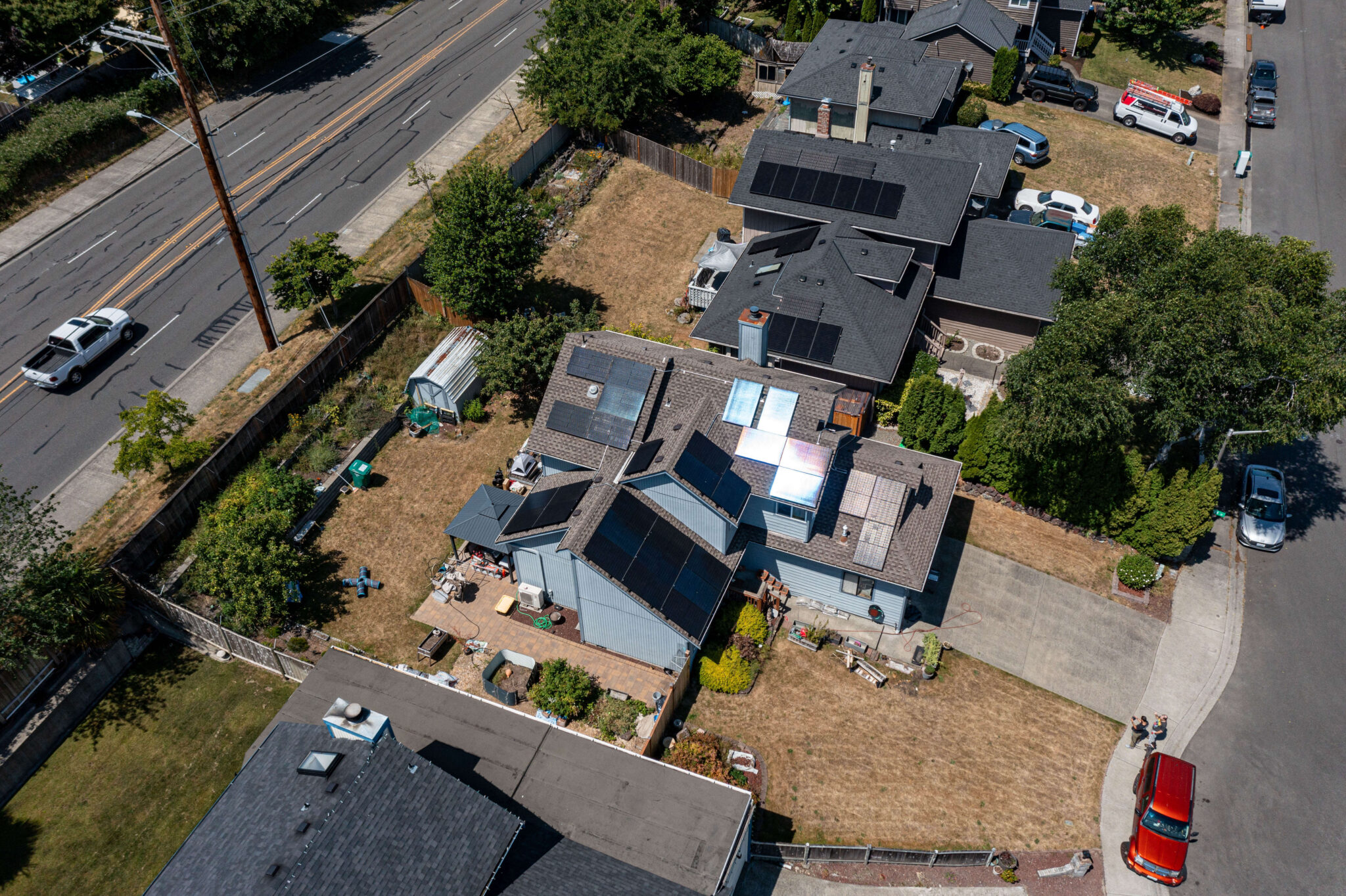Solar Panel Installation in Tacoma Power Territory
Tacoma is electrifying its grid with renewable energy generated by the sun! To help you better understand how this works, we break down some critical features for owning solar energy systems connected to the Tacoma Power grid.
About Tacoma Power and Electricity
Tacoma Power, a division of Tacoma Public Utilities, is a community-owned, not-for-profit energy provider. For over a century, the City of Tacoma and Pierce County customers have depended on us for safe and reliable energy. Tacoma Power provides electric service to Tacoma, Fircrest, University Place, Fife, parts of Steilacoom, Lakewood, Joint Base Lewis-McChord, and unincorporated Pierce County as far south as Roy, totaling about 181,630 customers.


Power Use, Cost, and Supply in Tacoma Power Territory
The average household uses 11,761 kilowatt-hours per year / 32.2. kilowatt-hours per day. The average cost per household is $1,112 per year / $93 per month. Our energy supply is 89% hydroelectric, and 46% of that is provided by Tacoma Power hydroelectric projects. See how you compare to your fellow Tacoma Power customers and see how much you can save with solar today, just fill out the Free Estimate form below!
Solar Panel Incentives and Tacoma Power
Federal incentives for solar panel systems for Tacoma Power customers include the Investment Tax Credit, a 30% tax credit for solar energy systems. In Washington State, solar energy systems are sales tax exempt.
Net Metering with Tacoma Power
Tacoma Power customers are installing their own rooftop solar panels as an electricity generation option. However, it’s essential to recognize that more than rooftop solar panels are needed to meet your year-round electricity needs. To ensure a consistent power supply, you’ll still need to maintain a connection with Tacoma Power through a “net metering” arrangement. This system allows Tacoma Power customers to purchase electricity when needed and feed excess electricity generated by their rooftop solar panels back into the grid when their consumption is low, ensuring a reliable and balanced electricity supply throughout the year.


